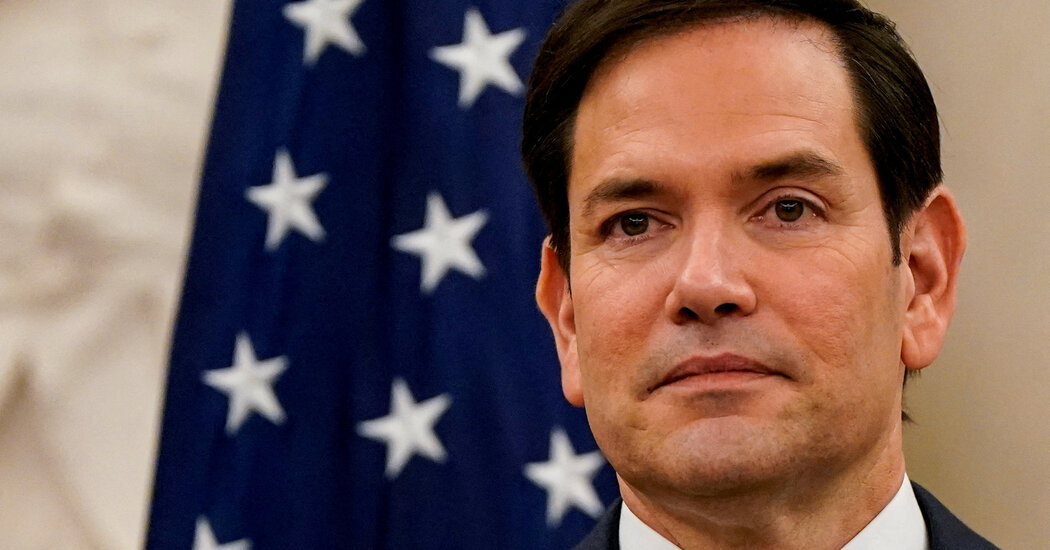What is popular is not necessarily what is best for social security.
There is no social program in this country which is more important for the financial well-being of Americans than social security. In 2023, he alone drew 22 million people above the federal poverty line, including 16.3 million adults aged 65 and over.
More importantly, it is a program on which a crushing percentage of retirees counts to reach both ends. Exhausting 23 years of annual surveys by Gallup, 80% to 90% of retirees have always replied that social security represents a source of “major” or “minor” income.
Unfortunately, this 90 -year program of 90 years is not on the best financial basis. Social security strengthening will require measures from our elected officials, which includes President Donald Trump.
But while Trump is committed to passing for the elderly, one of his biggest social security promises will have to be broken.

President Donald Trump addresses journalists. Image source: official photo of Andrea Hanks’s White House, graciousness of the national archives.
The deficit in the social security financing obligation exceeded 23 billions of dollars
Before digging more, it is important to understand the dynamics of the way in which the social security foundation has deteriorated over time.
In previous 85 years, the Social Security Board of Directors published an annual report detailing the financial “health” of the program. This report allows anyone to decompose the way in which social security generates income, as well as consequences where these dollars meet.
But the most precious aspect of the administrators’ annual report is to examine how monetary and fiscal policy changes, as well as demographic changes, have adjusted long -term solvency forecasts (75 years) for trustee funds. Keep in mind that social security is not likely to go bankrupt, disappear or not pay eligible beneficiaries. What is at risk is the continuity of the existing payment calendar, including adjustments to the cost of living (Colas).
According to the 2024 trustee report, the program’s long -term financing obligation deficit increased by $ 800 billion in the previous year to 23.2 dollars. In other words, program expenses – mainly benefits, but also administrative costs to manage social security – should exceed the estimated income received from 2024 to 2098 from 23.2 billions of dollars.
The projection is undoubtedly even more disturbing than the Fidth Age and Surviving Fidth Fund (OASI) will depleen its asset reserves by 2033. The OASI is responsible for the payment of monthly benefits to retired workers and to the survivors of deceased workers. If OASI’s asset reserves are exhausted in eight years, reductions in scanning services that can go up to 21% may be necessary to maintain payments until 2098 without the need for additional discounts.
The blame for the weakened financial prospects of social security has nothing to do with the omnipresent myths of the flight of the congress and the undocumented migrants receiving traditional advantages. It is rather the result of many demographic changes in progress, including a historically low American birth rate, an increase in income inequality and a significant drop in net legal migration in the United States

OASI asset reserves should be parties by 2033. Age fiduciary funds and age survivors and survivors at the end of the year are data of Ycharts.
President Trump’s social security promise would increase payments for about half of all retirees
Most presidents tend to avoid proposing changes to social security, because any change will eventually lead to a group of people less well off than before. But that did not prevent Trump from proclaiming his social media platform Truth Social at the end of July that “the elderly should not pay tax on social security”.
In 1983, the main American retirement program found itself in a situation somewhat similar to that today. Without action of the legislators, the trustworthy social security funds were on the right track to exhaust their asset reserves. The 1983 social security changes assured that this would not happen.
The latter major bipartite overhaul of social security has provided gradual increases in the tax on pay on earned income and the full retirement age, as well as the introduction of the taxation of benefits.
From 1984, up to 50% of social security services could be exposed to the rate of federal tax in the event of provisional income (gross adjusted income + interest in tax franchise + half-potting. In 1993, a second Level was added, which allows 85% of the services to be exposed to federal tax if the provisional income exceeded $ 34,000 for unique declarants and $ 44,000 for couples filed jointly.
While most Americans do not like to pay taxes, the taxation of social security services is particularly hated for a reason: these income thresholds have never been adjusted for inflation.
When the imposition of services was introduced more than four decades, it should affect around 10% of senior households. But as wages and collars have increased income over time, more and more retirees are now exposed to a certain level of tax on their social security check.
The post of Trump which ends the taxation of social security services would increase payments for about half of all retirees.

Image source: Getty Images.
It is a promise of social security that Donald Trump will have to break
On paper, there is a lot of support to end the tax on the advantages. But what is popular is not always what is best for social security.
Although the elimination of this hated tax on benefits would increase social security checks for certain retirees, it would further paralyze the financial foundation weakened the program.
Social security generates revenues in three ways:
The payroll tax is the undeniable family support for the program. In 2023, he represented 91.3% of 1.351 Billion of dollars of income collected for the OASI combined trust fund and disability insurance.
But over time, the taxation of services has become a greater source of income. If Trump’s promise was to be held and this source of income was eliminated, around 943.9 billion dollars (from 2024 to 2033) would not be collected by the first US retirement program over 10 years. Not only would this significantly broaden the long -term financing deficit of 23.2 dollars of the program, but it would accelerate the date of exhaustion of the estimated asset reserve of the OASI, and could even increase the magnitude by which services should be reduced. There is not in a fiscally responsible way so that Trump can keep this promise.
To rely on the above, the president would also need 60 votes in the Senate to modify the Social Security Act. The last time that one of the American political parties held a supermajeurity of votes (60) in the upper House of Congress was in 1979. In short, Trump would need bipartite cooperation to modify social security, which East very Unlikely – and it is not even clear what type of support he would have his own party in the Senate.
It is simply a matter of time before Trump breaks his promise of social security, and it will be absolutely the right decision.


